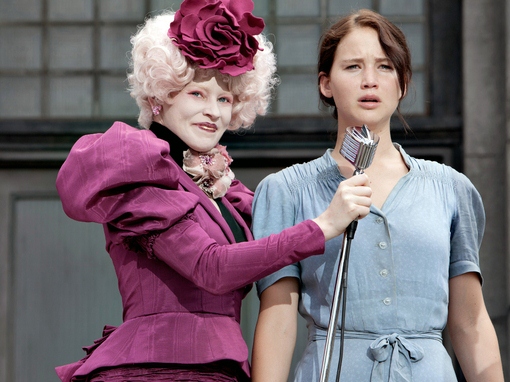Anyone who has read the 2008 bestseller on which it’s based will encounter no surprises in “The Hunger Games.”
Once again we’re in the post-apocalyptic country of Panem–formerly North America before an unspecified disaster wiped out that civilization some years earlier. Panem is divided into 12 heavily oppressed Districts ruled with a steel fist by the merciless President Snow (Donald Sutherland, little-seen) in the faraway Capitol. There was once a thirteenth District, but it grew rebellious and was destroyed.
Cowed by that intimidating example, the remaining populace lives in conditions of soul-draining deprivation, meekly acquiescent. But the Capitol’s vengeance is ongoing: It has instituted an annual event called the Hunger Games, for which “Tributes”–one boy and one girl between the ages of 12 and 18–are selected from each District to gather in an arena and engage in armed combat until all but one have been killed.
If fans of the novel will already know all of this (and fans of the Japanese film “Battle Royale” will recognize familiar ground), the same might have been said of such earlier book-to-screen adaptations as the “Harry Potter” and “Lord of the Rings” films. But in those cases, the filmmakers freshened the well-known tales with groundbreakingly imaginative digital effects, and surrounded the little-known young leads with estimable veterans (Maggie Smith, Alan Rickman, Christopher Lee).
In this movie, CGI is comparatively minimal, and some of the effects–an onslaught of fireballs, the inevitable rampaging beasties–are surprisingly cheesy; and while the picture is vitally enlivened by Stanley Tucci and Woody Harrelson in subsidiary roles, the focus is on a larger group of young actors who in some cases could be interchangeable.
Read the full review at Reason.com.

COMMENTS
Please let us know if you're having issues with commenting.